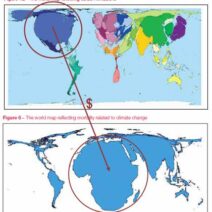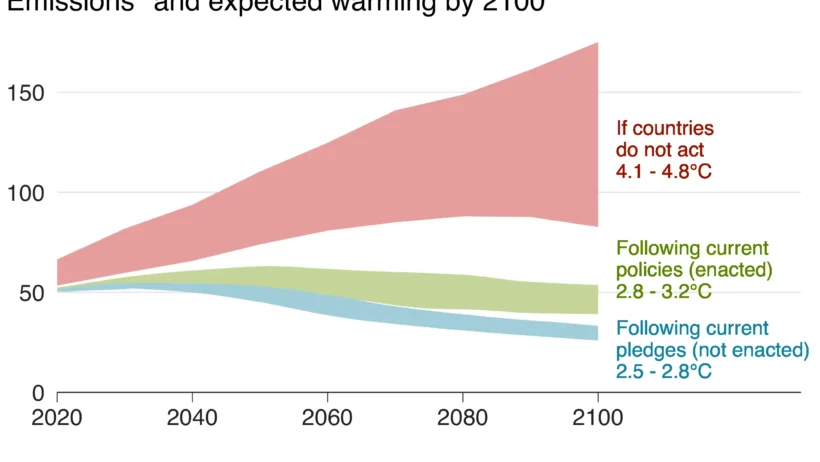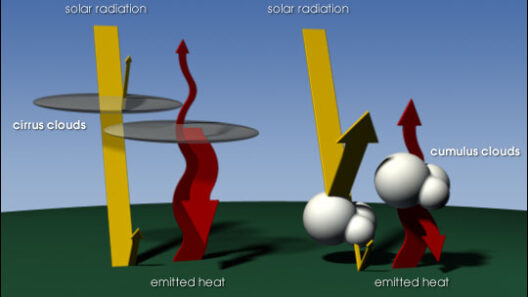As we ponder the air we breathe, have you ever stopped to consider what invisible changes are occurring in our atmosphere? The impact of global warming is not merely an abstract concern for the distant future; it poses immediate threats to atmospheric health, which in turn affects every living organism on Earth. Understanding this intricate relationship between climate change and atmospheric quality requires delving into several dimensions: pollution, greenhouse gas emissions, and the state of our ecosystems.
First, let’s examine the role of air pollution, an insidious byproduct of industrialization, urbanization, and agricultural practices. Emissions from vehicles and factories release particulate matter and toxic substances into the air. These pollutants significantly reduce air quality and contribute to a host of respiratory ailments in humans, including asthma, bronchitis, and lung cancer. But what are the implications of a warming climate on our existing air pollution levels? As temperatures rise, air stagnation becomes more common, trapping pollutants closer to the Earth’s surface and exacerbating health problems. Furthermore, warmer days can intensify photochemical reactions that lead to the formation of ground-level ozone, a prevalent and harmful air pollutant.
Next, we turn our focus to greenhouse gases, primarily carbon dioxide (CO2), methane (CH4), and nitrous oxide (N2O). These gases are pivotal in the greenhouse effect, trapping heat in the atmosphere and leading to noticeable climate shifts worldwide. The burning of fossil fuels, deforestation, and industrial activities continue to be significant sources of these emissions. The cumulative effect is not only a rise in global temperatures but also alterations in atmospheric composition that can adversely affect human health and environmental quality. For instance, increasing levels of CO2 are directly correlated with a depletion of oxygen availability in certain regions, particularly in urban areas where dense populations produce vast amounts of emissions.
Moreover, the ramifications of climate change extend into the intricate web of natural ecosystems, particularly those that function to purify air and regulate atmospheric conditions. Forests, often referred to as the lungs of the Earth, play an indispensable role in filtering pollutants and producing oxygen. However, rising temperatures and shifting precipitation patterns lead to droughts and wildfires, which not only devastate these natural air filters but also release stored carbon back into the atmosphere. This vicious cycle exacerbates global warming and diminishes air quality, posing profound threats to biodiversity and ecological resilience.
The interplay between global warming and atmospheric health raises important questions. How can we reverse or mitigate these trends? One potential solution involves enhancing policies that address both climate change and air pollution simultaneously. Implementing stricter emissions standards for industries, promoting renewable energy sources, and advancing electric vehicle technologies are pivotal steps that can alleviate both air pollution and greenhouse gas emissions. Additionally, promoting urban green spaces and reforesting efforts can significantly bolster local air quality while combatting climate change.
This leads us to consider not just institutional efforts but individual actions as well. What can you do to improve atmospheric health? Simple changes in daily habits can collectively lead to substantial improvements. Elevating the use of public transportation, participating in local environmental initiatives, and conserving energy at home serve as vital contributions to the overarching goal of restoring atmospheric balance. Each small action can collectively yield significant impacts, illustrating that collective responsibility is essential for tackling such a monumental challenge.
Moreover, education plays a crucial role in advocating for a sustainable future. By equipping communities with knowledge about the implications of air pollution and climate change, individuals can become informed advocates for change. School programs, public workshops, and community discussions can harness public interest and galvanize collective action towards cleaner air and a healthier atmosphere.
As we look forward, the challenges posed by global warming and air quality issues loom large. Yet, this urgency serves as a rallying cry for innovation and proactive measures in both policy and community engagement. Research into new air purification technologies, carbon capture methods, and sustainable agriculture practices continues to evolve, providing hope for a future where the air we breathe is not only clean but also revitalized.
In conclusion, the connection between global warming and atmospheric health is unequivocal. Our air quality is compromised by numerous factors stemming from climate change, while simultaneously experiencing detrimental effects on human health and ecological integrity. Thus, it is imperative that we embrace a harmonious approach to tackling these intertwined challenges. Protecting and enhancing the air we breathe requires a collaborative undertaking that encompasses all sectors of society—from policymakers to individuals to educational institutions. Only together can we hope to foster a future where atmospheric health thrives, ensuring that all life on Earth can flourish.





